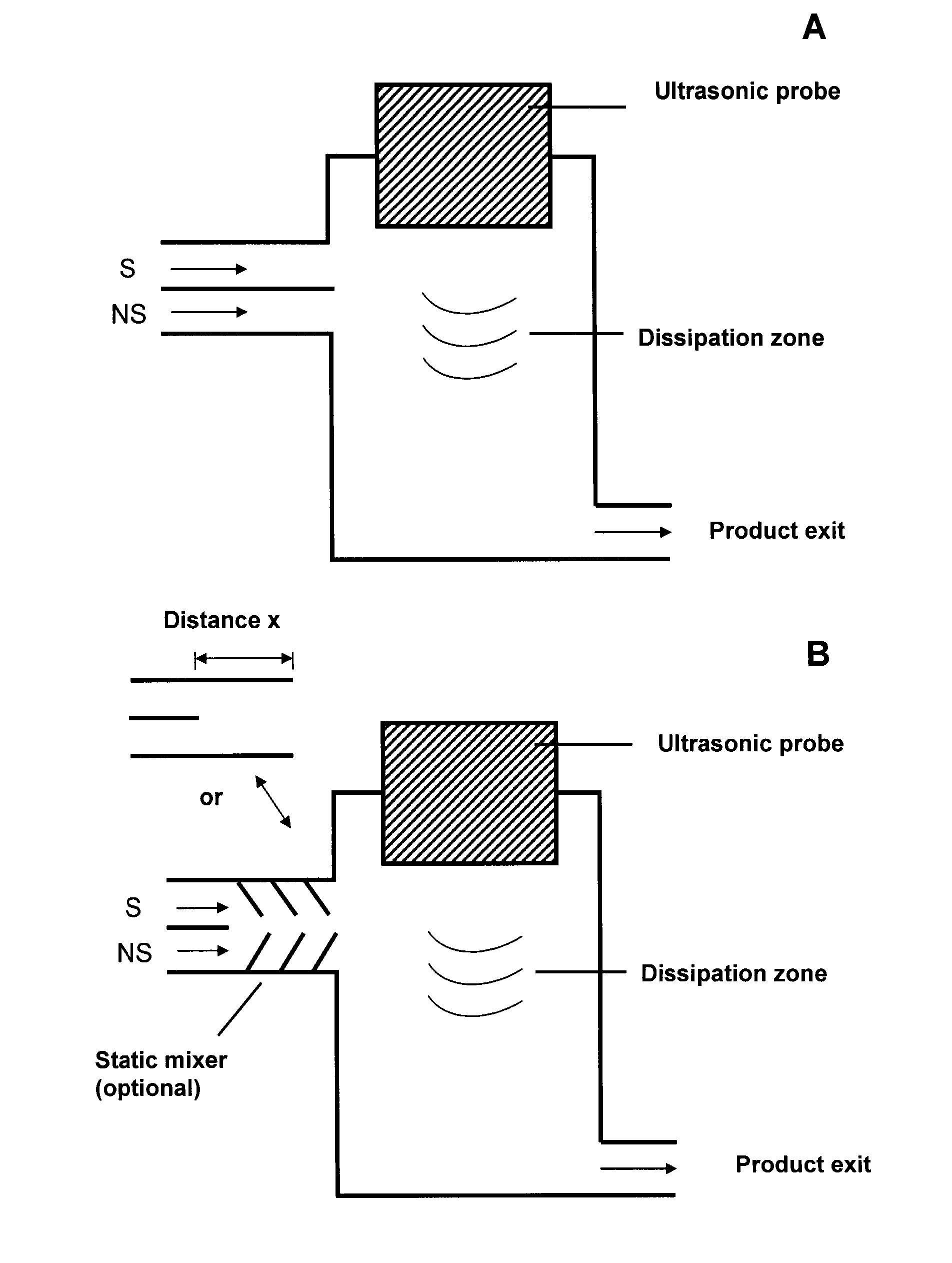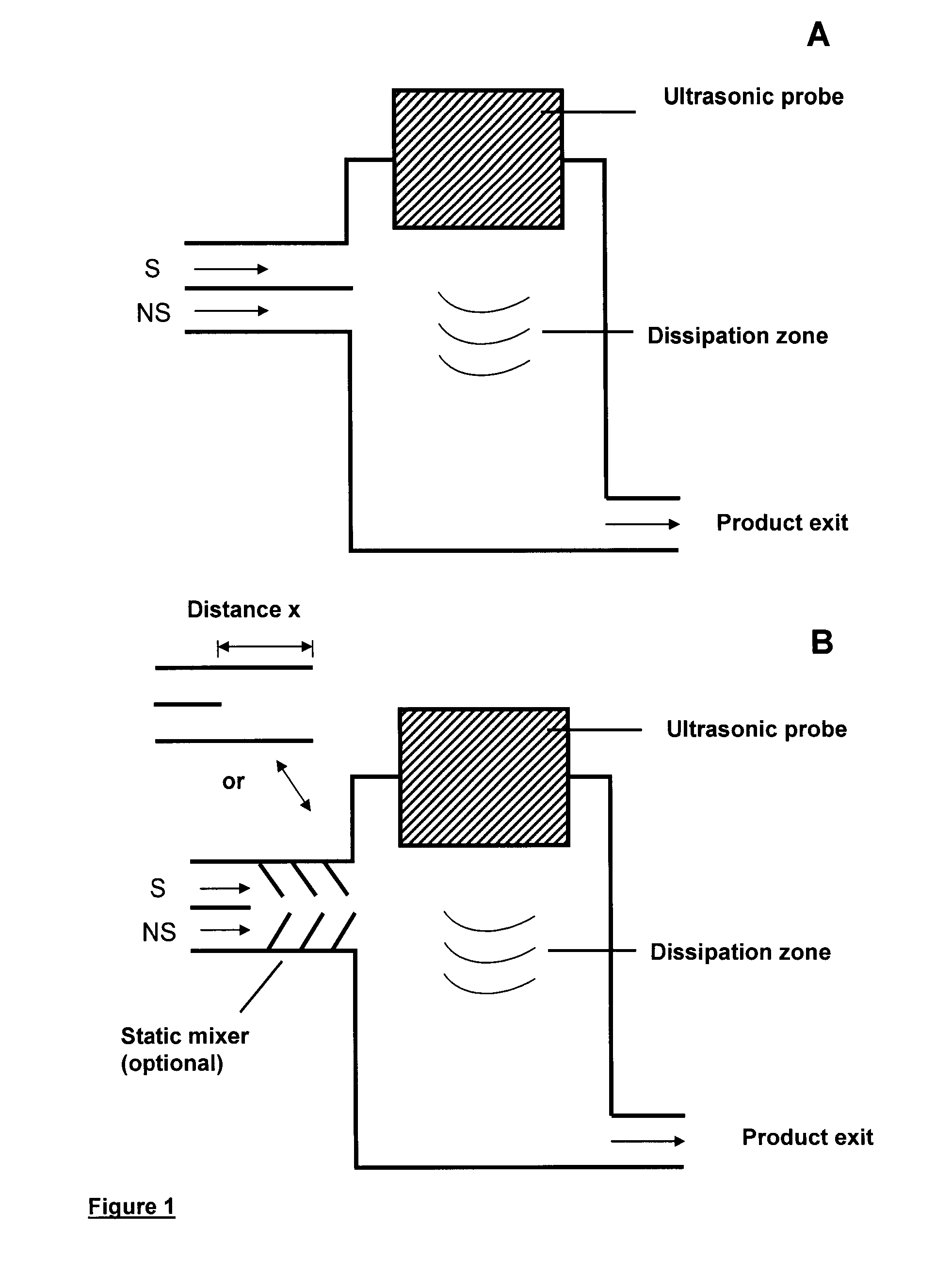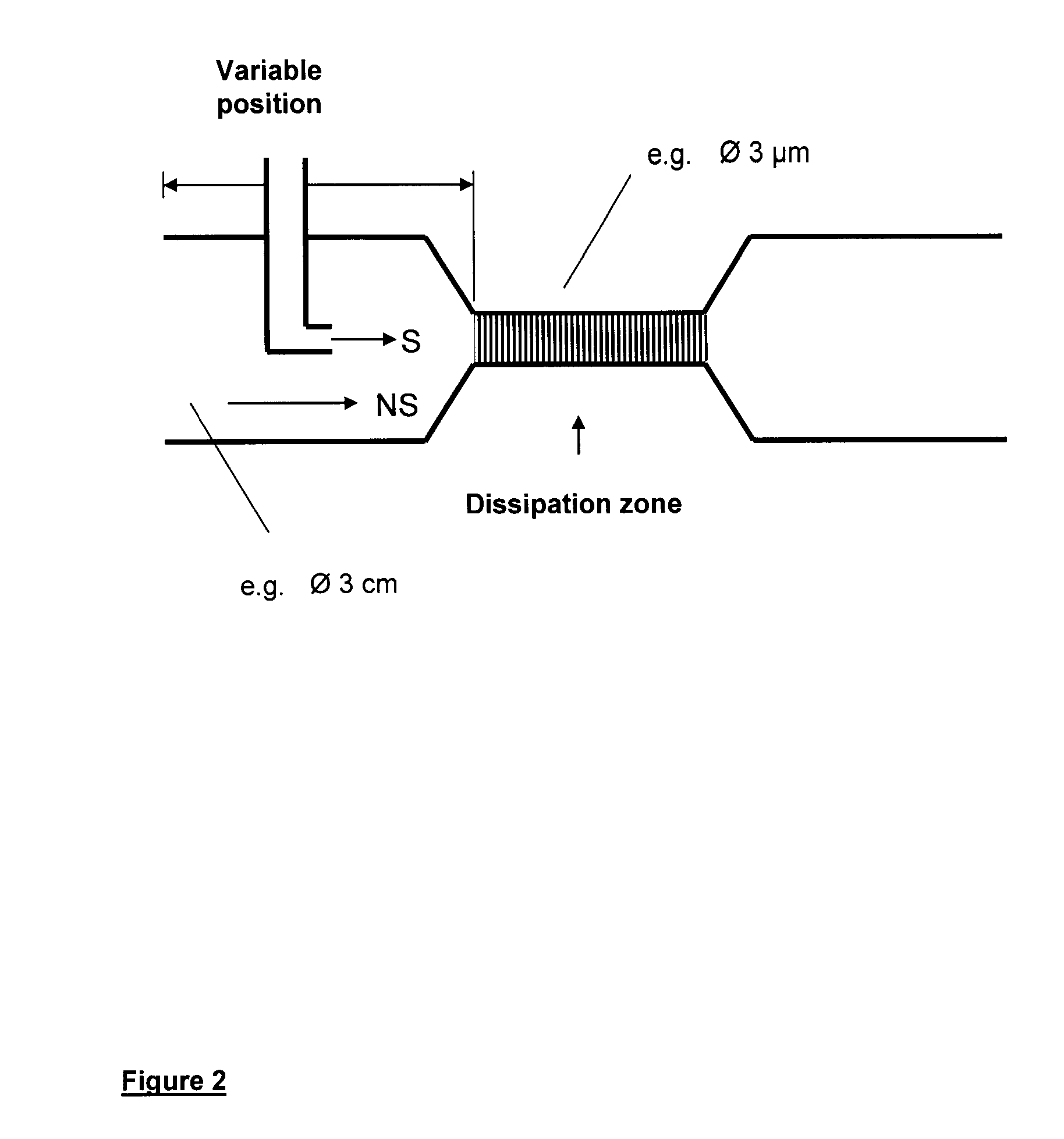Method and device for producing very fine particles and coating such particles
a technology of very fine particles and coatings, applied in the direction of granulation using vibration, colloidal chemistry, transportation and packaging, etc., can solve the problems of difficult inhibition, large crystal formation beyond the nanometre range, and no longer adequate micronizing
- Summary
- Abstract
- Description
- Claims
- Application Information
AI Technical Summary
Benefits of technology
Problems solved by technology
Method used
Image
Examples
example 1
[0087]Prednisolone was precipitated in the conventional manner, that is to say by addition of a solvent to a non-solvent. 275 mg of prednisolone were dissolved in 10 ml of 90% (v / v) ethanol and this solution was poured into 90 ml of distilled water, while stirring with a magnetic stirrer. Determination of the particle size directly after the precipitation gave a diameter LD 50% of 2.185 μm, LD 95% of 5.108 μm, LD 99% of 6.414 μm and a diameter of LD 100% of 8.944 μm (volume distribution, laser diffractometry, Coulter LS 230, Beckman-Coulter, USA).
example 2
[0088]Prednisolone was dissolved in 10 ml of 90% (v / v) ethanol analogously to Example 1. 10 ml of this prednisolone solution were then pumped with the aid of an infuser (Braun Melsungen, Germany) into an apparatus which is described in FIG. 2. The pumping rate was 1.5 ml / min. The volume of the aqueous phase was 90 ml, exactly as in Example, in order to compare the conventional precipitation with the inventive method. After an infusion time of one minute a sample of the precipitated product was taken and with the aid of photon correlation spectroscopy (Zetasizer 4, Malvern, United Kingdom). The average particle diameter (z-average) was 113 nm, the polydispersity index (PI) was 0.678.
example 3
[0089]A precipitation was carried out analogously to Example 2, and after 5 minutes a sample of the precipitated product was taken and analyzed with the aid of photon correlation spectroscopy. The average particle diameter (z-average) was 27 nm at a polydispersity index (PI) of 0.460.
PUM
 Login to View More
Login to View More Abstract
Description
Claims
Application Information
 Login to View More
Login to View More - R&D
- Intellectual Property
- Life Sciences
- Materials
- Tech Scout
- Unparalleled Data Quality
- Higher Quality Content
- 60% Fewer Hallucinations
Browse by: Latest US Patents, China's latest patents, Technical Efficacy Thesaurus, Application Domain, Technology Topic, Popular Technical Reports.
© 2025 PatSnap. All rights reserved.Legal|Privacy policy|Modern Slavery Act Transparency Statement|Sitemap|About US| Contact US: help@patsnap.com



